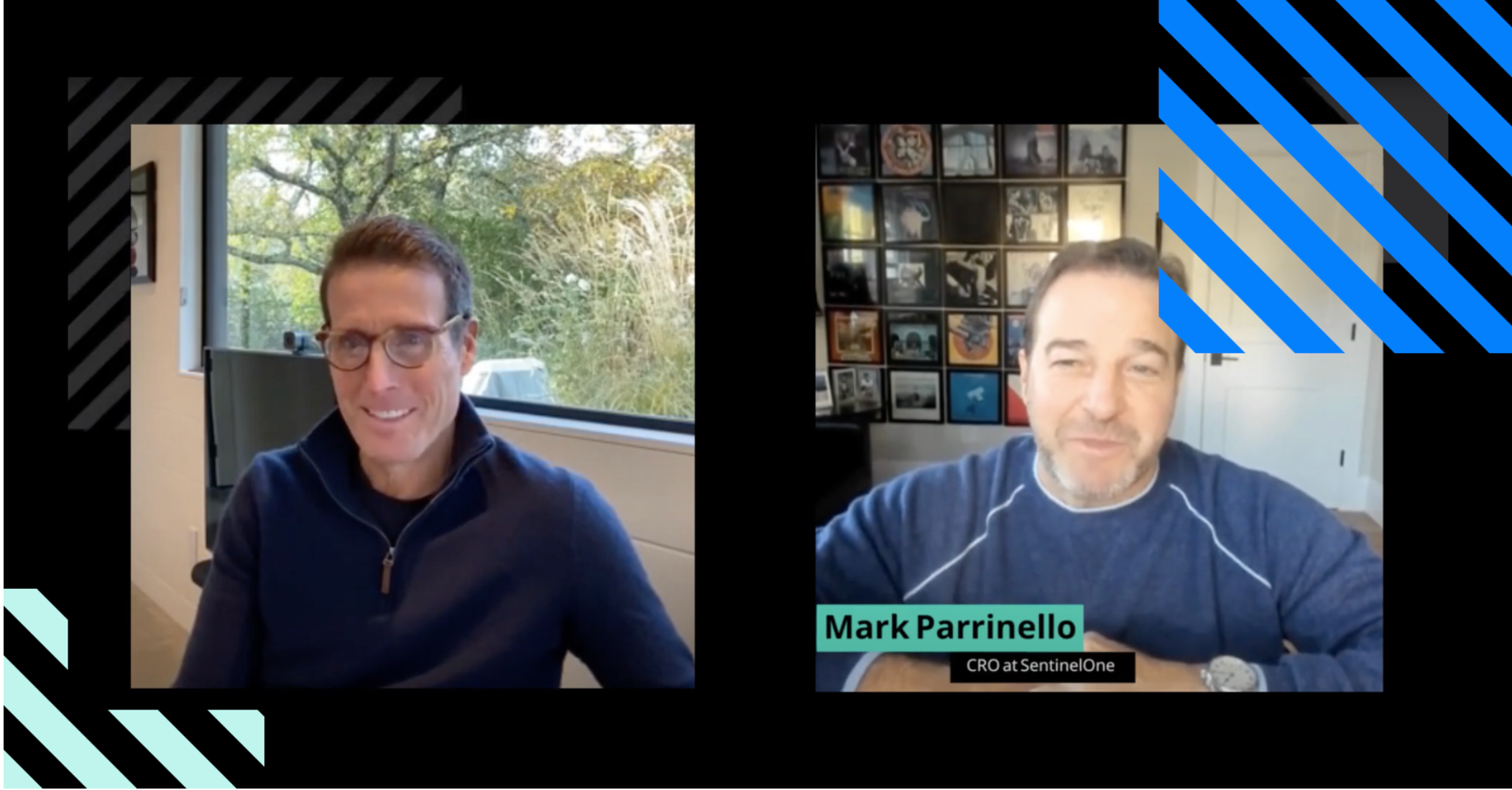
Mark Parrinello is retiring.
He's had a long and successful career in various sales leadership roles (Cohesity, Nimble Storage, NetApp, Kovarus, and CA Technologies, among others) and, most recently, as Chief Revenue Officer (CRO) at SentinelOne for the past four years.
Over the past few decades, Mark has been, worked with, worked for, and hired all sorts of revenue leaders - from sales reps to front-line managers, to 1st/2nd/3rd/4th leaders, to CROs.
He's seen it all.
Andy Byrne, Clari CEO, chatted with Mark recently about his time as CRO, how he looks at hiring on the revenue side of the house, and how he thinks about (and runs) a revenue cadence.
Let's start with the CRO, the fastest-growing job in America in 2023.
What makes a top-notch CRO?
We love a solid CRO. So much so that we launched our first annual CRO Awards in 2023. Not surprisingly, Mark is on the list.
So we asked Mark what qualities he looked for in hiring his replacement, Michael Cremen.
"Someone who has seen $1-2B. A person who knows what a big company acts and feels like, who knows how to run strategic sales plays. And - very important - someone not too far removed from the field. We needed an executive to get into the deals and spend time with the customers and the partners."
A stellar CRO understands the balance between strategy and a "grinder mentality" - someone who will get into the field with customers and partners. Someone who still has an entrepreneurial spirit.
Those traits, per Mark, are key to long-term success in the CRO role.
Equally as important, steer clear of the "been there, done that," type of hire. The last thing that works for a CRO is someone who looks and sounds the part, but is "all hat, no cattle" (all talk, no action).
An ideal CRO candidate will also, depending on organization size, have two to four layers of leadership who report to them.
What talents does a first-line leader have? What about a front-line manager (FLM)?
Mark subscribes to the 1:3 ratio when hiring for these positions.
For every three leadership roles, one hire is external, while two are internal. Promoting from within - seeing that upward mobility, the growth, the promotions - is fantastic, but you also need external knowledge. To grow and stretch, leadership needs an individual who will come in and ask, "Why do you do that?" A person who will "bring their own playbook." This holds true unless your organization is in hypergrowth mode. In that case, the ratio flips.
This stage requires people who "just know how to do the job" because the job you're hiring for will be two times that job in a year.
A front-line manager (FLM) hire is a bit different.
Mark calls an FLM "one of the hardest and most important jobs" because everything flows to this person. They are involved in every deal. They must be intimate with their team (the reps). They have to be very diligent at pipeline inspection.
They must be able to balance all of the above.
"The first place to start with rep productivity is not the reps; it's the first (front) line manager. If you can make them more productive, they can positively influence the 5/8/10 reps on their team," says Mark.
You also need FLMs to buy into all of the sales enablement programs. They must be the "tech champs." FLMs must be at the top of their game for early-stage pipeline inspection.Sales leaders have to be:
- Forecasting gurus
- Inspiring and motivating
- Involved in the deals
- Speak regularly with customers and partners
- Able to pull together a channel and sales plan
Phew. It's a lot.
But something that too often gets missed - pushed to the side - is that FLMs must build the cadence. You must demand the cadence that your second, first, and third line must be able to look at early-stage pipeline inspection. If not, you simply will not have the rep productivity you want or need.
Let's lean into cadence.
How to run revenue like a pro, Part I (Hint: cadence)
At Clari, we are all in on revenue cadence. In fact, we published The Clari Revenue Cadence Playbook™ to help you and your team master the revenue moments that drive your business.
We want to show you how to avoid revenue leak and win more revenue - predictably and confidently.
As Clari CEO Andy Byrne often says, "Many CROs don't really know exactly how their cadence is being run. They've got an okay model of it, but they don't know if it's actually being run correctly."
When we think about mapping out revenue cadence at Clari, it looks like this: We plan out every meeting of every day of every week of every month of the quarter - from one-on-ones to pipeline inspectors to "PG Mondays" to slip deal reviews to reviewing new logo or upsell/cross-sell opportunities.
Per Andy, "Having a true understanding of that blueprint is the key. Where are you good, and where can you improve?"
Mark starts with a sales infrastructure cadence, a two-page slide deck that includes the following:
- Monday staff call with all the details: When it is, what it's for, who attends
- Forecast call ... with all the details
- Deal inspection ... with all the details
And so on.
Why? Three reasons.
- Aligns calendars: If it's not on the calendar, it will not happen.
- Sets expectations: Everyone is on the same page, with the same shared goal.
- Creates a standard: You're aiming for alignment, accountability, discipline, and control behaviors.
Generally speaking, Mark expects more process (less hands-on) the further up the line you go from rep to executive. Note: You must have process to scale a business.
How to run revenue like a pro, Part II (Hint: tech)
You likely have a sales leader in your organization who's at the top of their game in deal reviews. This person has a nose for how to get a deal done. They are intuitive and have a knack for solid forecasting.
But eventually, they will come to a point where intuition and instincts won't be enough. It's time for science. You just cannot scale without science accompanying the art.
In the 1960s, "American psychologist of management," Harold Leavitt created the People, Process, Technology (PPT) Framework, a model that emphasizes the importance of balancing and integrating skills and communication (people), procedures and workflows (process), and tools and platforms (technology) for successful organizational change and performance.
60+ years later, the PPT framework still holds.
The technology (tools, software, in this case) has evolved. It's more sophisticated, more powerful.
To run revenue like a pro, leaders must be efficient in tools: forecasting, enablement, and so on. Leaders must be adept at assessing and implementing those tools to help them scale..
Technology and tools have been and will continue to be a massive part of how you assess data. Mark stressed the importance of hiring tech-savvy leaders who understand the various platforms.
But sales is still a numbers game: More activity >> more opportunity >> more you put in your pipeline >> the larger pipeline >> the more opportunity you have for success.
The key is to marry activity with tech-savviness. If you're not officially utilizing tools to be more productive and to find ways to get into accounts, you are leaving revenue on the table.
Put Mark's advice into action and build your revenue cadence around a revenue platform. Grab our Revenue Cadence Builder Checklist.




